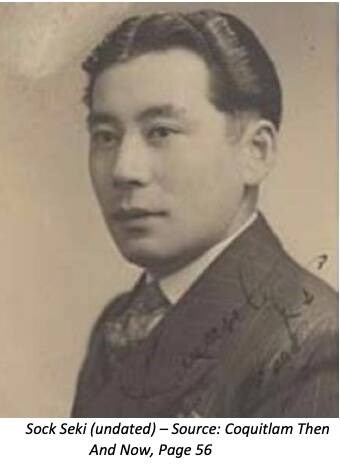Seki Avenue. Kong Court. Ghuman Place.
If you read these street names in a few years, you’ll know you’re in Fraser Mills — the waterfront community that Beedie Living is building on the old Coquitlam sawmill site.
On June 19, city council unanimously OK’d the three street names — plus four more — for the redevelopment that, when constructed over six phases, will see 5,500 homes for up to 13,000 people in 16 towers plus a future public recreation centre and school.
The first high-rise, called Debut, is expected to be up by 2026.
While Seki Avenue was already in the city’s Street Naming Policy for pre-approved titles, the six others needed council’s consent to be used at Fraser Mills, located at the southern end of King Edward Street at United Boulevard.
In a report to council, Andrew Merrill, Coquitlam’s director of development services, said that city staff worked with the Coquitlam Heritage Society, as well as the families whose names would be made permanent on street signs.
And Mayor Richard Stewart congratulated the company for leaving a lasting legacy that not only honours past mill workers, but is inclusive with multicultural representations:
- Seki Avenue (Japanese): Sock Masumi Seki was one of the first Japanese children who was born and raised at Fraser Mills. He worked at the sawmill with his dad until their forced internment at an Ontario camp during the Second World War. Afterward, Seki returned to work at Fraser Mills. Seki and his wife, Hisako “Sussy” Suda, raised three sons in Coquitlam: Don, Frank and Steve. Now a Port Moody resident, Don Seki volunteered for more than 40 years with the Coquitlam Search and Rescue.
- Kong Court (Chinese): Hor Too “Barney” Kong worked as a Chinese labour contractor and lived at Fraser Mills from 1912 to his death in 1953. According to city records, his home was the hub of Chinese activity as Kong was active with the Yue Shan Society, Gong Lai Ho Society and the Chinese Benevolent Society.
- Ghuman Place (Sikh): There are three generations of the Ghuman family that worked in B.C.’s forestry industry. Daya Singh Ghuman immigrated to Canada in 1906 and worked with his son, Katar, at Fraser Mills. Daya was active with the Guru Nanak Mining and Trust Company and was one of the first Sikhs to be initiated into the Khalsa in Canada at the first Gurdwara built in Vancouver. Two other sons, Rattan Singh Ghuman and Thaker Singh Ghuman, also worked in B.C. lumber mills (Rattan’s father-in-law, Harman Singh Sohi, was a Komagata Maru passenger in 1914.)
As for the other four street names in Fraser Mills, they also have ties to Fraser Mills’ past operations: Fraser Mills Drive, Millside Street, Lumber Alley and Corduroy Road.
In his report, Merrill wrote that city staff are now working with members of the Kwikwetlem First Nation for future Indigenous street names for the redeveloped site.
Meanwhile, council gave first reading to Beedie Living’s rezoning bid on June 19 and sent it to a July 10 public hearing to tweak the street network design for the property.
Council told city planners they would like improvements to the public realm elements that are being proposed, such as to the stylized “F” gateway sign and street furniture like benches and trash cans.
The Fraser Mills sawmill operated from 1890 to 2005.
In 2008, Beedie Living got council approval for its original Waterfront Village Centre Neighbourhood Plan and development agreements; eight years later, the company added 1316 United Blvd. — expanding its grounds to 91.5 acres.
Last October, the new waterfront plans was green-lit by council and the following applications are now under review, Merrill wrote:
- subdivision for Phase 1B to create two industrial lots (Lot 23 ad 24), five residential lots (Lots 9, 10, 13, 14 and 15) and one mixed-use commercial/residential lot (Lot 11)
- development permits for three residential towers (Lots 13, 14 and 15)
- development permit for industrial building (Lot 23)





